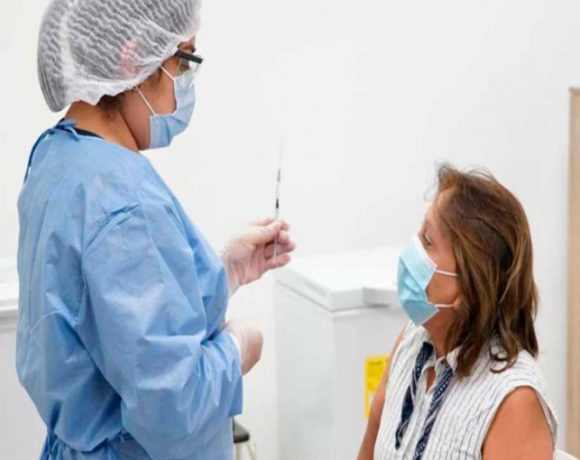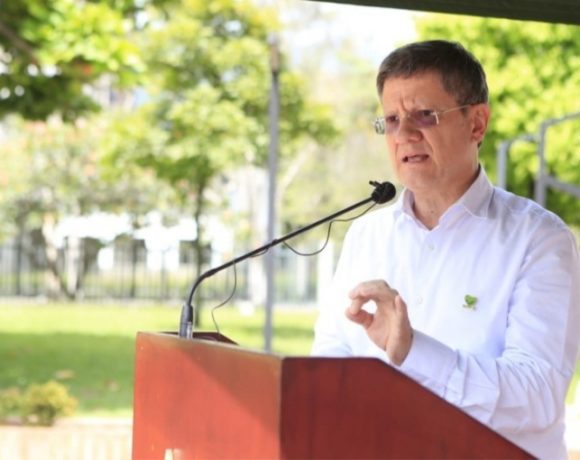‘Medical Tourism’ Growing, but More Efforts Needed: Medesalud 2015

While the number of foreigners coming to metro Medellin for relatively low-cost, high-quality medical and dental procedures continues to grow, windows of opportunity have only just started to open.
Current status: Some 5,600 foreign patients traveled to Medellin last year, spending a total of US$12 million at the 24 affiliates of Medellin’s medical-dental “cluster,” as cluster director Adolfo Moreno explained to Medellin Herald on October 28 at the 8th annual “Medesalud” conference here.
Not included in this “foreign” patient count are Colombians who live and work in North America, Europe and elsewhere, but frequently return in big numbers to Medellin to take advantage of the city’s wide variety of cost-competitive medical and dental services, Moreno told us.
Among the 300 registrants for “Medesalud” attending two full days of expert lectures here were nine foreign prospective “buyers” of medical/dental services – mainly foreign insurance-company representatives investigating the variety and quality of services available here, he said.
This included company representatives from the U.S., Trinidad and Tobago, Panama and the Dominican Republic, he added. They toured “cluster” centers to see first-hand the facilities, technologies and services now available to foreign patients.
Medellin’s “cluster” doesn’t have a big promotional campaign budget to reach potentially huge markets for medical/dental tourism, such as potential patients in relatively “high-cost” areas such as North America or Europe, Moreno said.
What’s more, relatively low costs for medical/dental services in Medellin won’t automatically drive a big jump in medical tourism, he added. Prospective patients also need to gain confidence in quality and service delivery — but most don’t know much of anything about what Medellin has to offer.
However, satisfied customers often tell others – via word-of-mouth promotion — which is exceptionally valuable to Medellin’s medical-dental “cluster” today, Moreno told Medellin Herald.
5 Keys: Patients, Doctors, Clinics, Insurers, Researchers
However, even more efforts are needed if Medellin is to meet aggressive 2020 goals for boosting “medical tourism,” as Medellin medical-dental “cluster” president Carlos Restrepo explained in a separate presentation to the “Medesalud” conference here.
“We need to attract both patients and [health] insurance companies” in order to boost medical tourism to Medellin, Restrepo said.
Also needed: Campaigns to attract and retain high-quality doctors as well as aggressive pursuit of medical research and investigation, he added.
“We’re in a transition period,” Restrepo said. Because of that, Medellin’s medical-dental “cluster” participants must ask themselves: “What more must we do to be competitive?”
Medellin’s “cluster” participants have made “huge progress” in upgrading and expanding service offerings and have moved to integrate diagnostic services, he added.
Pablo Tobon Uribe Wins JCI Accreditation
One outstanding example of such progress: Hospital Pablo Tobon Uribe announced here that it just won the coveted Joint Commission International (JCI) accreditation, which also is being sought by several local medical institutions (see Medicine in Medellin: Medical Tourism Growing (Part One), Medellin Herald, September 8, 2015).
The Medellin medical/dental “cluster” includes 10 hospitals: Hospital Universitario San Vicente Fundacion, Hospital Pablo Tobon Uribe, Clinica CardioVID, Clinica El Rosario, Clinica Las Vegas, IPS Universitaria, Hospital General de Medellin, InterQuirofanos and San Vicente Fundacion.
It also includes six ambulatory centers including Clinica Clofan, Clinica de Oftalmologia San Diego, InSer, CediMed, Laboratorio Echavarria and Clinica Astorga. Five odontological centers include Clinica Odontologico VID, Oral Laser, Oral Home, Dental Center, and Clinica AltaEstetica Dental.
Two medical research universities – Universidad CES and Universidad Pontificia Bolivariana – and three networks – Salud Sin Fronteras, Sarpa and Link – round-out the medical-dental “cluster.”
In another presentation here, CardioVID researcher Juan Santiago Jaramillo reported “excellent” results in the development of a “minimally invasive” heart surgery technique, while Clinica Rosario physician Ivan Dario Serna reported on his clinic’s impressive strides in joint-and-limb procedures including knee replacements.
On another front, IPS Universitaria researcher Sergio Estrada showed results of cutting-edge artery transplants, while InSer fertility institute official Juan Luis Giraldo showed that his clinic has delivered relatively high success rates (39% last year) for in-vitro fertilization, with foreign patients among the beneficiaries. InSer also developed Colombia’s first bank of stem cells from umbilical cords, he added.
Ever-Changing Technologies
Despite such progress, hospitals, clinics and doctors in Medellin and elsewhere in Latin America will continue to face big challenges between now and 2030, as industry consultant Ana Morato of Spain-based Clarke Modet explained in a presentation here.
For example: More than half of the total population of Latin America still has limited access to health care services — and while cancer incidence is lower in Latin America than in the USA or Europe, cancer mortality rates are double that of the “advanced” nations, she said.
Cancer deaths throughout Latin America are seen jumping by more than 60% by 2030, while diabetes is seen likely to rise by 68% over the same period, she added. Both of these increases are seen tied to the rise of relatively sedentary life-styles, which are more typical of city dwellers than farm dwellers, she explained.
Meanwhile, neuro-degenerative diseases such as Alzheimer’s and Parkinson’s also are seen growing by 43% in Latin America between now and 2030, the result of increasing life-expectancies, she said.
Various technologies that are seen emerging could help to diagnose and treat such diseases, however.
Such technologies include further advances in digital imaging, “hybrid” medical instruments, more “localized” drugs and surgical procedures, “bio-chips” that can detect problems inside human bodies, and “bio-prostheses” that can be generated from “mother” cells in a patient’s body, she said.
Another emerging technology: novel “mobile health” diagnostic systems that can be attached to cell phones, with medical data then transmitted wirelessly to health centers, she showed.
















